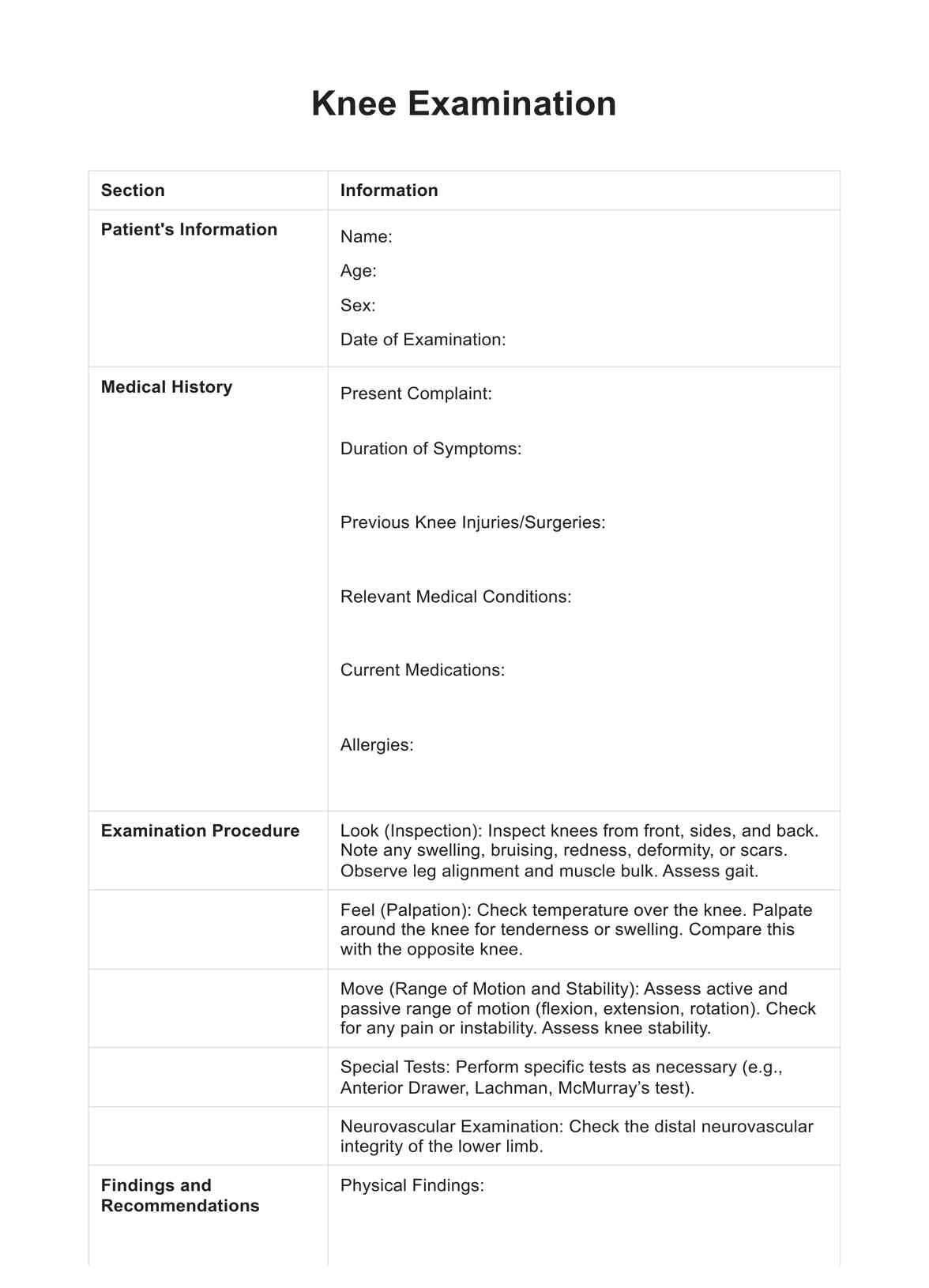The concept of a systematic knee examination has been a part of orthopedic practice for many years, developed and refined by countless healthcare professionals. It's not attributable to a single creator but a collective medical understanding.

Knee Examination
Discover how a knee examination test can assist in diagnosing knee conditions. Download our free PDF guide for a comprehensive knee exam!
Knee Examination Template
Commonly asked questions
Interpreting a knee examination involves understanding the results of each step - inspection, palpation, movement, special tests, and neurovascular examination. Each finding contributes to the overall clinical picture and, combined with the patient's symptoms and medical history, helps guide the diagnosis and treatment plan.
Performing a knee examination involves a series of steps, including looking at the knee, feeling for abnormalities, checking the range of motion, conducting special tests, and assessing the neurovascular status. A trained healthcare professional best performs it. Always refer to an established clinical guide or consult a medical professional if you're unsure.
EHR and practice management software
Get started for free
*No credit card required
Free
$0/usd
Unlimited clients
Telehealth
1GB of storage
Client portal text
Automated billing and online payments











